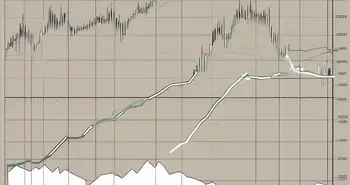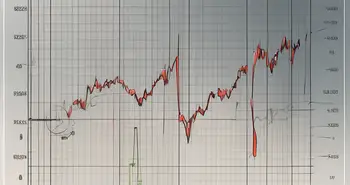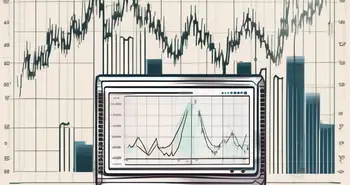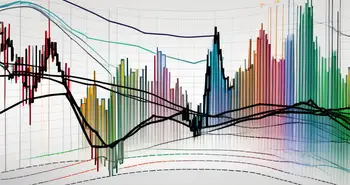Understanding the McGinley Dynamic Indicator: A Powerful Tool for Traders

As a seasoned trader, I have come across numerous technical indicators that claim to enhance profitability and assist in making better trading decisions. However, there is one particular indicator that has caught my attention and proved its worth time and time again – the McGinley Dynamic Indicator. Let's dive into what makes this indicator so powerful and how it can benefit traders like you.
Introduction to the McGinley Dynamic Indicator
Developed by John McGinley, a prominent technical analyst, the McGinley Dynamic Indicator is designed to overcome the limitations of traditional moving averages. Unlike simple or exponential moving averages, the McGinley Dynamic Indicator adjusts its speed based on market conditions, providing a smoother and more reliable trend line.
John McGinley, a renowned figure in the world of technical analysis, developed the McGinley Dynamic Indicator with the aim of revolutionizing trend identification. Traditional moving averages often suffer from lag, making it difficult to accurately capture the current market conditions. However, the McGinley Dynamic Indicator addresses this issue by prioritizing recent price action while still considering historical data. By doing so, it provides a more accurate representation of the prevailing trend, reducing false signals and enhancing overall accuracy.
The Origin and Purpose of the McGinley Dynamic Indicator
The McGinley Dynamic Indicator was created with the goal of minimizing lag and improving trend identification. Unlike conventional moving averages, it accounts for historical data but prioritizes recent price action. This ensures that the indicator accurately reflects the current market conditions, reducing false signals and enhancing overall accuracy.
John McGinley, a true pioneer in the field of technical analysis, recognized the limitations of traditional moving averages. He understood that these indicators often fail to capture the true essence of market movements due to their reliance on historical data. To address this issue, he developed the McGinley Dynamic Indicator, which places greater emphasis on recent price action. By doing so, this indicator provides traders with a more accurate representation of the prevailing trend, allowing them to make more informed trading decisions.
Key Features of the McGinley Dynamic Indicator
One of the standout features of the McGinley Dynamic Indicator is its ability to adjust its speed dynamically. This means that during volatile periods, the indicator will respond swiftly to changes in price, while during more stable periods, it will adapt and provide smoother readings. This dynamic adjustment ensures that the indicator remains responsive to market conditions, allowing traders to stay ahead of potential trend reversals.
In addition to its dynamic speed adjustment, the McGinley Dynamic Indicator is also highly versatile. It is suitable for both short-term and long-term traders, as it can be easily customized to suit any time frame. This flexibility allows traders to adapt the indicator to their preferred trading style, whether they are looking for short-term opportunities or long-term trends.
Furthermore, the McGinley Dynamic Indicator stands out for its ability to filter out noise in the market. By adjusting its speed based on market conditions, it effectively smooths out price fluctuations and provides a clearer trend line. This feature is particularly valuable for traders who rely on technical analysis, as it helps them identify the underlying trend amidst market volatility.
Overall, the McGinley Dynamic Indicator offers traders a powerful tool for trend identification. Its ability to adjust its speed dynamically, its versatility across different time frames, and its noise-filtering capabilities make it a valuable addition to any trader's toolkit. Whether you are a short-term trader looking for quick opportunities or a long-term investor seeking to capture major trends, the McGinley Dynamic Indicator can provide valuable insights into market movements.
The Mathematical Formula Behind the McGinley Dynamic Indicator
Understanding the calculation process behind the McGinley Dynamic Indicator is essential for harnessing its power. It involves taking the sum of the previous day's value and applying a smoothing constant. This constant determines how fast the indicator reacts to changes in price and can be adjusted by traders to suit their preferences and trading style.
Understanding the Calculation Process
To calculate the McGinley Dynamic Indicator, start by multiplying the closing price of the previous period by the smoothing constant. Next, subtract the smoothing constant from the previous period's McGinley Dynamic value and add the current closing price multiplied by the same constant. This process is repeated for each period, resulting in a smooth trend line that adapts to market conditions.
The McGinley Dynamic Indicator is designed to provide a more accurate representation of market trends compared to traditional moving averages. By incorporating a smoothing constant, it effectively filters out short-term price fluctuations and focuses on the underlying trend. This makes it particularly useful for identifying long-term trends and determining optimal entry and exit points.
One of the key advantages of the McGinley Dynamic Indicator is its ability to adapt to changing market conditions. Unlike fixed-length moving averages, which may lag behind during volatile periods, the McGinley Dynamic Indicator adjusts its sensitivity based on the smoothing constant. This allows traders to stay in tune with the market and make informed decisions.
The Role of the Smoothing Constant
The smoothing constant plays a crucial role in the McGinley Dynamic Indicator formula. It determines the speed at which the indicator adjusts to price changes. Traders can experiment with different values to find the optimal setting that aligns with their trading strategies and risk tolerance. Higher values will make the trend line more responsive, while lower values will provide a smoother reading.
When selecting a smoothing constant, it is important to consider the time frame of the analysis. Shorter time frames may require higher smoothing constants to capture rapid price movements, while longer time frames may benefit from lower values to filter out noise and provide a clearer trend indication.
It is worth noting that the choice of smoothing constant is subjective and may vary among traders. Some traders prefer a more aggressive approach, opting for higher values to capture short-term fluctuations, while others prefer a more conservative approach, using lower values for a smoother and more stable trend line.
Ultimately, the optimal smoothing constant will depend on the individual trader's preferences, risk appetite, and the specific market conditions being analyzed. It is recommended to backtest different values and observe their impact on historical price data to determine the most effective setting for the McGinley Dynamic Indicator.
Interpreting the McGinley Dynamic Indicator
Now that we understand how the McGinley Dynamic Indicator is calculated, let's explore how to interpret this powerful tool on a chart.
How to Read the Indicator on a Chart
The McGinley Dynamic Indicator appears as a smooth trend line on a price chart, cutting through the actual price bars. When the price remains above the indicator, it suggests a bullish trend, while a price below the indicator indicates a bearish trend. Traders can look for crossovers between the price and the indicator to identify potential entry and exit points.
Understanding the Indicator's Signals
While trading solely based on the McGinley Dynamic Indicator might be tempting, it is always advisable to use it in conjunction with other technical analysis tools. This helps confirm signals and avoid false readings. For instance, you can combine the indicator with candlestick patterns, volume analysis, or other oscillators to enhance the probability of successful trades.
The Advantages of Using the McGinley Dynamic Indicator
When it comes to technical analysis tools, the McGinley Dynamic Indicator offers several distinct advantages that set it apart from traditional moving averages.
The Indicator's Superiority to Moving Averages
Unlike simple or exponential moving averages, the McGinley Dynamic Indicator adapts to market conditions, making it more reliable in dynamic trading environments. Its ability to minimize lag and provide a smoothed trend line ensures that traders receive timely and accurate signals, enabling them to stay ahead of the curve.
The Impact of the Indicator's Speed Adjustment Feature
Traders often face the challenge of adapting their strategies to various market conditions. The McGinley Dynamic Indicator's speed adjustment feature allows traders to fine-tune their readings, making it suitable for both trending and ranging markets. This versatility enables traders to have greater flexibility and enhances their overall success rate.
Potential Drawbacks and Limitations of the McGinley Dynamic Indicator
While the McGinley Dynamic Indicator is a powerful tool, it is essential to understand its limitations to avoid overreliance and potential pitfalls.
Situations Where the Indicator May Not Be Effective
As with any technical indicator, the McGinley Dynamic Indicator is not infallible. During periods of low volatility or choppy market conditions, the indicator's responsiveness may lead to false signals or whipsaws. It is crucial to combine the indicator with other tools and exercise caution when interpreting its signals.
The Importance of Combining the Indicator with Other Trading Tools
To maximize the potential of the McGinley Dynamic Indicator, it is best used in combination with other technical analysis tools. This helps confirm signals, mitigate risks, and enhance overall trading accuracy. By utilizing a multi-dimensional approach to technical analysis, traders can make well-informed decisions that increase their chances of profiting from the market.
As an expert trader, I have witnessed firsthand the effectiveness of the McGinley Dynamic Indicator in my own trading journey. It has become an integral part of my arsenal, providing me with invaluable insights into market trends and guiding my decision-making process. Remember, always conduct thorough research, test your findings, and develop a trading strategy that aligns with your goals and risk tolerance.
FAQ
Q: What makes the McGinley Dynamic Indicator different from other moving averages?
A: The McGinley Dynamic Indicator adjusts its speed based on market conditions, providing a smoother and more accurate trend line compared to traditional moving averages. This adaptive feature enhances the indicator's ability to identify trends and reduces lag.
Q: Can the McGinley Dynamic Indicator be used for day trading as well as long-term investing?
A: Yes, the McGinley Dynamic Indicator is suitable for both short-term and long-term trading strategies. Its adjustable speed allows traders to customize the indicator to any time frame, making it versatile for various trading styles.
Q: Should I solely rely on the McGinley Dynamic Indicator for my trading decisions?
A: While the McGinley Dynamic Indicator is a powerful tool, it is always wise to combine it with other technical analysis tools. This helps confirm signals, reduce false readings, and increase the probability of successful trades.
Q: Are there any situations where the McGinley Dynamic Indicator may not be effective?
A: Yes, during periods of low volatility or choppy market conditions, the McGinley Dynamic Indicator's responsiveness may lead to false signals or whipsaws. It is crucial to be aware of these conditions and utilize the indicator in conjunction with other tools to avoid potential pitfalls.
Ready to elevate your trading game with the insights from the McGinley Dynamic Indicator? Look no further than Morpher, the revolutionary trading platform that integrates cutting-edge blockchain technology for a seamless investing experience. With Morpher, you can trade a vast array of assets, from stocks and cryptocurrencies to unique markets, all with zero fees and infinite liquidity. Whether you're looking to start with fractional investing, engage in short selling without interest fees, or leverage your trades up to 10x, Morpher offers the tools and safety you need. Take advantage of the innovative Virtual Futures and enjoy the control of a self-hosted wallet. Sign Up and Get Your Free Sign Up Bonus today to transform your trading strategy with Morpher.

Disclaimer: All investments involve risk, and the past performance of a security, industry, sector, market, financial product, trading strategy, or individual’s trading does not guarantee future results or returns. Investors are fully responsible for any investment decisions they make. Such decisions should be based solely on an evaluation of their financial circumstances, investment objectives, risk tolerance, and liquidity needs. This post does not constitute investment advice.

Painless trading for everyone
Hundreds of markets all in one place - Apple, Bitcoin, Gold, Watches, NFTs, Sneakers and so much more.

Painless trading for everyone
Hundreds of markets all in one place - Apple, Bitcoin, Gold, Watches, NFTs, Sneakers and so much more.









